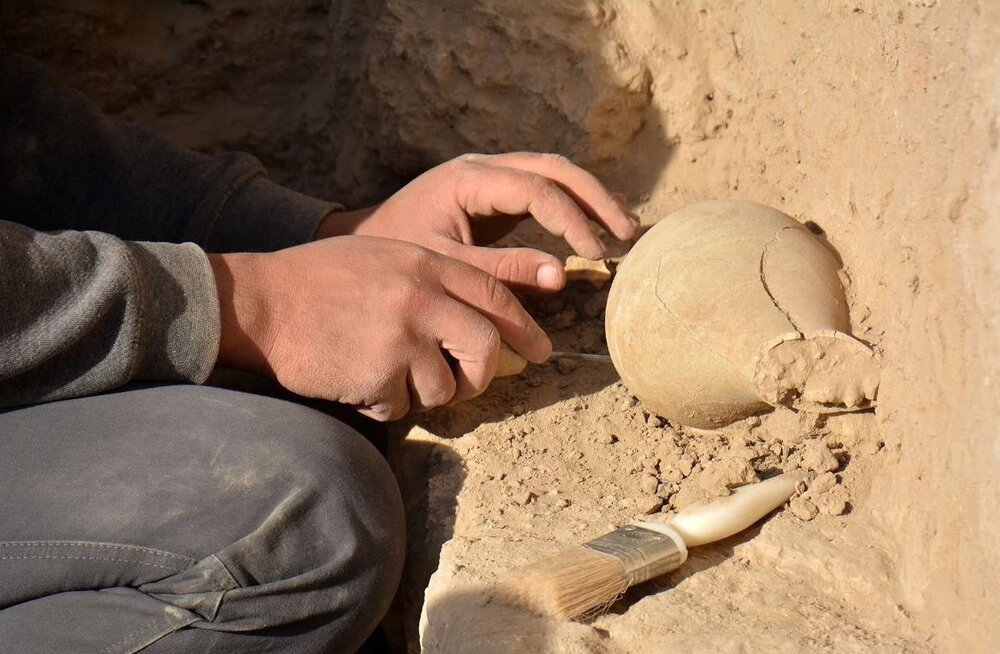Fingerprint from 5,000 years ago found in Burnt City

TEHRAN –A fingerprint left on a clay vessel made by a potter some 5,000 years ago has recently been found in Burnt City, a UNESCO-registered site in southeast Iran.
Archaeologists found a 5,000-year-old fingerprint along with plant seeds while excavating the Tapeh Dasht area of Burnt City, Mehr quoted a senior local archaeologist as saying on Saturday.
Moreover, some pottery fragments have been found in Tapeh Dasht, which is one of the 700 satellite sites situated around the Burnt City, Mehdi Mortazavi said.
Also known as Shahr-e Sukhteh or Shahr-i Sokhta, Burnt City is associated with four rounds of civilization, all burnt down by catastrophic sets of fire. The site is situated in the Sistan-Baluchestan province, which was once a junction of Bronze-Age trade routes crossing the Iranian plateau.
The amount of earthenware unearthed in the current excavation season suggests the discovery of a large pottery workshop that apparently supplied pottery to Burnt City, the expert said.
The pottery workshop is estimated to cover five ha, he added.
“The fingerprints left on the pottery pieces can give us important information about the inhabitants of this area,” Mortazavi stated.
Founded around 3200 BC, Burnt City was populated during four main periods up to 1800 BC. Previous rounds of excavations showed that its residents had great skills in weaving, and creating fine arts such as decorative objects, stone carving, and pottery painting.
Last year, teams of Iranian, Italian, and Serbian archaeologists discovered ruined settlements and fresh clues about life in Burnt City.
According to the UN cultural body, changes in water sources and climate change led to the eventual abandonment of the city in the early second millennium. The structures, burial grounds, and numerous significant artifacts unearthed there and their well-preserved state due to the dry desert climate make this site a rich source of information regarding the emergence of complex societies and contacts between them in the third millennium BC.
“In general, the surrounding desert landscape and extraordinary scatter of archaeological material present on the surface of the low hill of Shahr-i Sokhta give a strong sense of authenticity, as does the sight of the complex architecture of the various parts so far excavated. The labyrinthine succession of rooms, corridors, and courtyards gives a genuine impression of these ancient buildings.”
Shahr-i Sokhta has been inscribed on the list of national cultural properties of Iran as no. 542 in 1966. The property is in State ownership and is protected by the provisions of the Law for Protection of National Heritage (1930) and the related bylaw (1980).
AFM
